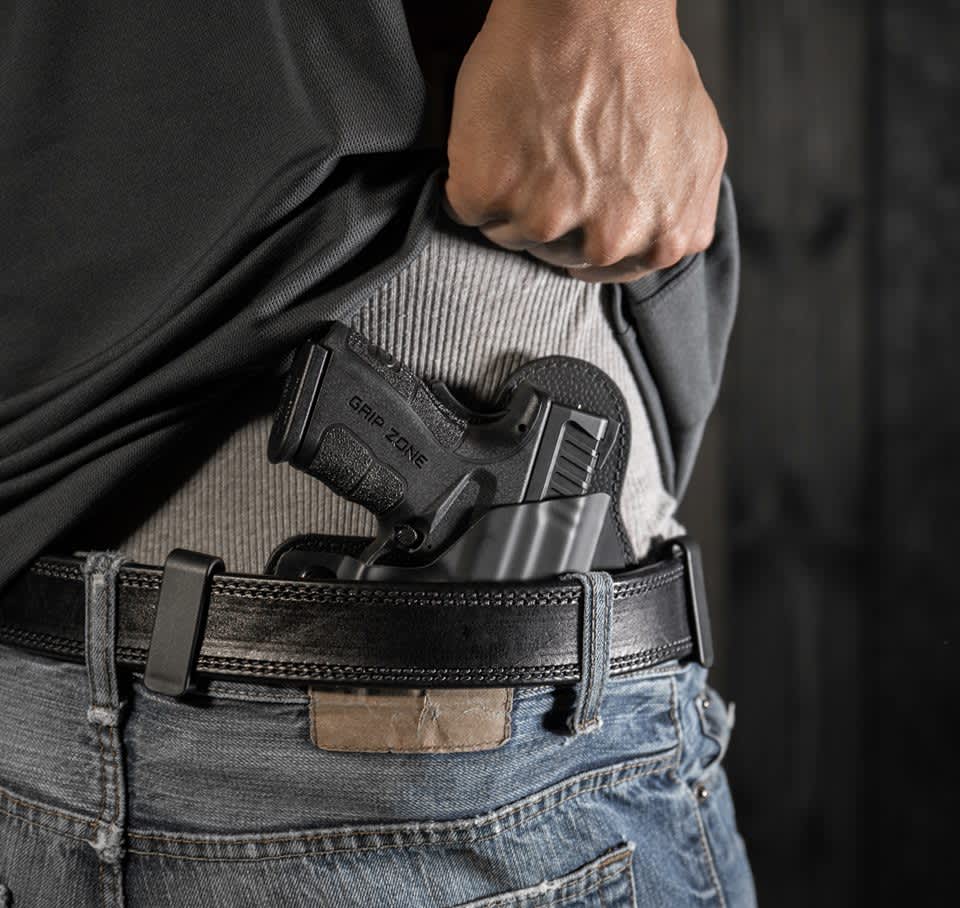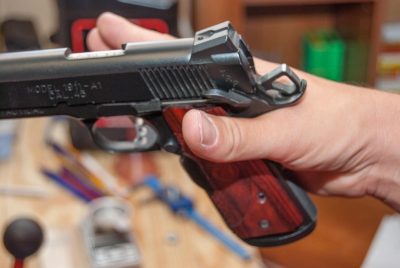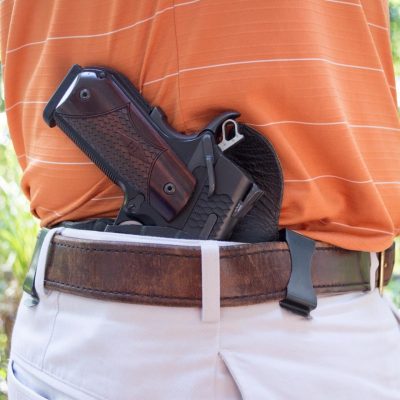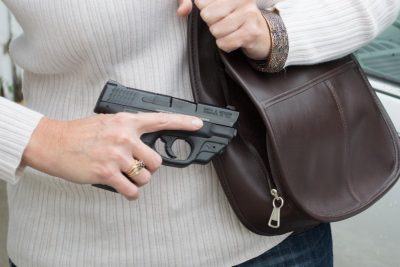NRA Shooting Series: Concealed Carry Fundamentals
OutdoorHub Reporters 01.27.17

If you make the decision to carry a pistol, you’re obviously concerned about protecting the safety of yourself and those you love. That’s exactly why it’s so important to approach your concealed carry plan with the utmost diligence, caution and dedication to continuous learning.
Having a gun on your person guarantees nothing – not even your protection. Knowing how, when and even if to use it safely is what might save your life. Without the right knowledge, skills and training, you might be in more danger than if you were unarmed.
If you’re considering becoming one of the tens of millions of responsible armed Americans, consider this checklist as a guide to get you moving in the right direction.
Knowledge is Power
The best place to start is with some book knowledge so you can develop a perspective on the big picture. When you make a decision to carry, you’ll need to know not just how to operate a gun, but self-defense law, strategies, tactics, avoidance techniques and most important, the right mindset. Books won’t develop skill, but they will help you identify the skills and concepts you need to learn.
Here are a few titles to get you started:
NRA Guide to the Basics of Personal Protection Outside the Home
NRA Guide to the Basics of Personal Protection in the Home
Gun Digest Book of Concealed Carry by Massad Ayoob
Armed and Ready: Your Complete Guide to Concealed Carry Confidence book and DVD set

Take a Basic Shooting Instruction Class
For some reason, we humans believe we have pre-existing instinctive knowledge about how to handle and shoot a gun. Based on the behavior of too many people I see at the range, I can tell you that we don’t. Firearms are tools, but ones with life and death consequences if used incorrectly. Do the right thing and take a basic firearms handling and shooting class. Virtually every gun range in the country will offer one, and the cost for a group class is minimal, especially considering that it might save your life or that of someone else.
Another good idea, which will cost a few bucks more, is to hire a private instructor. If you go this route, you can ask him or her to bring a few different pistols so you can try out different styles before you buy your own gun.
Finding a class or instructor is easy; just ask your local gun store or range, or you can find an NRA-certified Instructor here.

Schedule a State Concealed Carry Class
Your first class taught you how to use a gun safely. Next, it’s time to start the process of learning the laws you need to know to carry concealed in your state. If you live in a state that doesn’t require a permit, proceed to the next step and get some self-defense firearms training.
For the rest of you, enroll in a class as soon as possible, even if you aren’t yet ready to carry. The class will teach you important concepts that could alter your decision on whether to carry. Just be aware that a state-required concealed carry class is NOT self-defense training. These classes are designed (with rare exceptions) as introductions to state requirements and laws you need to know. After you get your permit, you’ll still want to take proper and credible self-defense training.
Schedule Your First Self-Defense Training Class
Having a permit guarantees nothing. Knowing how, when and if you should use a gun is where the real work starts. A good concealed carry class will teach you plenty of harsh reality, and start the process of tearing down any false sense of security you might have now that you’ve got a carry permit.
At a class like this, you can expect your instructor to teach you as much about when NOT to use a gun as when to use one. You’ll spend a lot of time on the range learning real-world techniques such as drawing from a holster, reloading your gun under stress, shooting while moving, making use of cover, and situational awareness. And you’ll learn strategies for avoiding trouble.
You’ll know if you attended a good class if you leave with a healthy dose of fear about how much you still don’t know. But that’s okay because it gives you incentive and a long-term training plan.

To find a class near you, check the NRA Instructors site. There, you can find information on excellent starting classes such as NRA Basics of Personal Protection Outside the Home and NRA Defensive Pistol. You can also ask local gun stores and shooting ranges for recommendations. Be sure to check reviews and recommendations before you commit to a class; there’s nothing more discouraging than wasting time and money on sub-par training.
Figure Out How You’re Going to Carry Concealed
You might notice this step comes after your first self-defense training class. That’s because your instructor will be able to help you narrow down effective and safe carry methods based on your lifestyle. You’re almost certainly going to have to adjust your wardrobe and some lifestyle habits to begin carrying a gun. There are lots of nifty concealed carry gimmicks on the market that promise effortless carry and comfort. Your instructor will be able to help you evaluate whether such methods will be effective and useful in the event of a real attack.

The classic tried-and-true method for concealed carry requires an inside-the-waistband belt holster. Why? Inside the waistband (IWB) carry keeps your gun in an accessible position near your firing hand. It also keeps the gun on your body and under your control at all times. It’s fast, secure and safe. Accordingly, it only works well with pants of a skirt and some type of shirt or jacket to cover the exposed part of your handgun. If you have to dress up for work, this method may not be convenient, and you’ll have to make wardrobe changes to make it work. Ladies, it also won’t work with many types of outfits such as dresses.
Your concealed carry instructor will be able to help you evaluate tradeoffs between your attire needs and your holster type. They’ll also be able to educate you on the specific disadvantages and potential dangers of non-traditional carry methods such as briefcase, purse, ankle and other styles.
If you want to get a head start on learning about the pros and cons of different concealed carry methods, check out The Practical Guide to Gun Holsters for Concealed Carry.

Practice, Practice, Practice – To Avoid a Deadly False Sense of Security
By its very nature, an attack requiring a self-defense response will be fast, aggressive and surprising. That’s why it’s so important to develop good habits. Scientists say it takes thousands of repetitions of an action for it to become automatic, and concealed carry skills are no different. You’ll need to practice routine things such as drawing your gun from concealment, getting on target quickly, safe trigger discipline without conscious thought, and much more.
Fortunately, practicing at home using safe dry-firing techniques, and empty gun manipulation, can help you cement the skills learned during top-notch live instruction.
Commit to a Lifetime of Learning
Because carrying a gun for self-defense can literally have life or death consequences, it’s up to you to take it seriously by never stopping the process of self-evaluation and self-improvement. After you learn the fundamentals, supplemental learning material in books, magazines and videos will make much more sense, and you can evaluate which techniques and strategies will work best for you.
If you’ve seen a theme of relentless and self-initiated learning here, then we’re on the same page. Take your self-defense education seriously, because your life just might depend on it.

